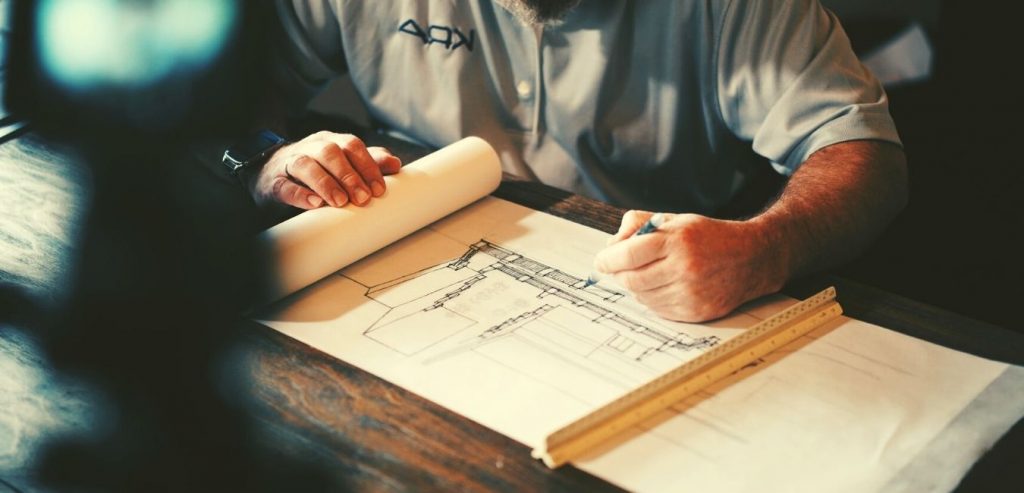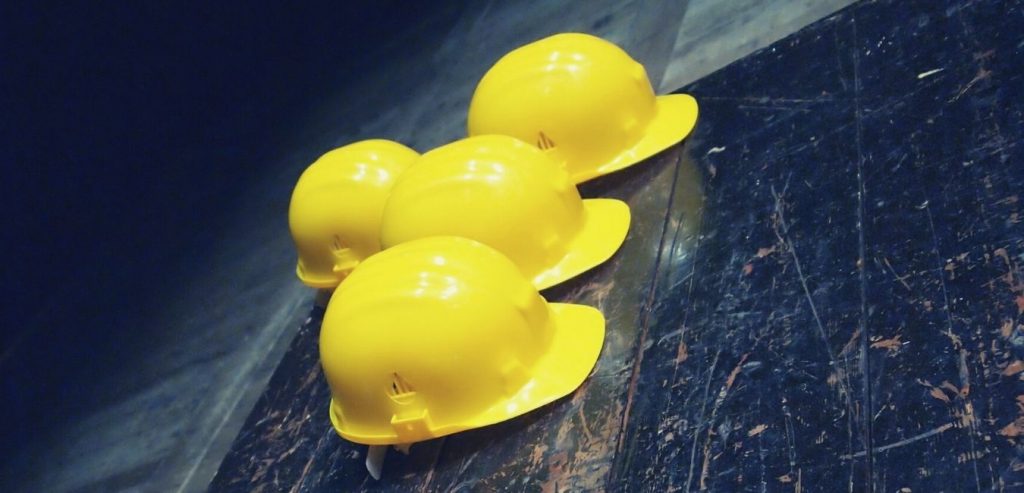When it comes to building a commercial building, there are many factors you need to take into consideration, some of which you might not be aware of. This process can sometimes seem overwhelming as the procedures vary depending on different factors, as discussed below.
To get properly acquainted with the construction process from start to finish, let us take an in-depth overview of how you can build your commercial construction project as seamlessly as possible.
Table of Contents
Find a location
Location, location, location! You certainly have heard this mantra when realtors are assessing property values. This applies to commercial buildings too. The commercial building is quite a significant investment, and you need to make the right choice as to where it will be located.
By analyzing specific indicators, investors can systematically assess the choice of their building location and be confident with their decisions. There are warning signs that one needs to be on the lookout to mitigate the risks before pursuing a particular site. We will point out some of the factors you need to be on the lookout for.
- Accessibility- The proximity of a building to nearby transportation systems affects its accessibility by clients. An investor also needs to assess a building's walkability. A building within walking distance to a restaurant is a good sign for business.
- Ensure your location does not have a moratorium on buildings. Before buying a property, research on nearby infrastructure conditions such as fire hydrants and pump stations whether they are enough or whether you are required to add new ones. Check the sewer and water lines also. If they are inexistent, it can be very costly to install new ones.
- Market overview. The best advice for investors is to seek economically stable areas for investment. They can look at the job market in the area, average salary, and job growth. In economically depressed regions, a general lack of maintenance and disrepair might be retrogressive when attracting clients.
Understand the requirements of the building
Before starting construction, you need to set down the building requirements as per the features you need. You need to consider the size, number of rooms, and occupancy. It is essential to involve an architect so that they can adequately capture your requirements. This gives a vision for the project and a platform for building upon the project's substantial parts.
Discover permit requirements, zoning, and local laws
In commercial buildings, everything needs to be done appropriately as per the zoning laws and permits governing construction in the area. There might be restrictions on colors, floor heights, and other area requirements.
It would be best if you also made provisions for modern technology amenities to satisfy your building plan. Some tenants demanding some amenities such as wireless internet, parking, and fitness centers

Set a budget
When planning to set up a commercial building, you have to ensure it is a good investment return. It would be best to grasp the market fundamentals such as competition, vacancy, and rent. The price-to-rent ratio is also a reasonable valuation of a project's long-term profitability.
After these preliminary plans, the details are given to a commercial construction estimator to estimate the project's cost, materials, machinery, and the labor required. If the problem seems viable at this stage, it is advisable to go ahead with the project.
Go through the stages of construction.
This is where that open space or grass field is turned into a commercial building suiting your needs. Stages of construction planning have to be followed carefully, from the simplest to the most complex, to ensure a great outcome.
The project may vary in scope and budget, but the construction processes are the same. The use of digital solutions such as estimating software has even made the planning of these stages easier and attainable with even higher precision. Valuable data during this phase plays a role in improving and standardizing the project throughout the construction process. There are six construction phases you need to know about. These are:
- Designs, Conception, and Planning
- Permits
- Preconstruction
- Procurement
- Construction
- Post-construction

Designs, Conception, and Planning
The conception stage begins with the client, where the dream is born. The location search and project specifications kick off at this stage. Conception can take anywhere from a few days to months or even more, depending on the project's urgency.
After the conception stage, the project is now closer to fruition, and it is time to sit and put pen to paper. This is still a preliminary phase, and usually, the bidding process begins here.
There are four stages in the design phase. These are feasibility, schematic design, contractual documents, and design development.
The feasibility step is where a lot of the planning takes place. Objectives of the project are outlined at this stage, and numerous vital decisions are made. These include the use of space, building size, and other critical decisions.
In schematic design, the architects and engineers produce preliminary drawings and sketches for design development. The cost estimation is also done here, and the contract documents are drawn up.
Permits
The design team headed by the architect is responsible for ensuring all state regulations are met. Building permits keep you and your workers protected throughout the construction period. Building within the necessary permits also protects the contractor. The required licenses include prefabricated structures, electrical and plumbing systems, heating, air conditioning, and land use.
Preconstruction
The preconstruction phase begins after the bidding process is over and a contractor has been selected for the work. The project team is now fully assembled at this stage.
The team works closely with the contractor and is responsible for visiting the field and examining the site. Crucial steps here include an environmental assessment plan and soil testing. The data is collected, and the relevant authorities review all procedures and findings before construction starts. It usually is a long process as all queries and pre-construction costs have to be addressed.
Procurement
In the procurement stage, the team orders materials, equipment and obtains labor. This complexity depends on the project's size, readily available resources, and the expected commencement date.
Big construction companies usually have a procurement department and can simultaneously procure labor, equipment, and materials. The main contractor generally does procurement, but there are times where subcontractors are in charge of certain portions of the work.
Construction stage
Just before the construction begins, a preconstruction meeting is conveyed to ensure all team members are on the same page. The information includes project quality control, storage of materials, working hours, and site accessibility.
Poor planning in the construction stage can lead to heavy budget overruns and unforeseen project delays. The goal is to ensure everything runs seamlessly in the project. Without careful planning, something always goes wrong in construction. The best thing is to use a digital solution for planning this stage to avoid such pitfalls.
Post Construction Stage
The site's job has been completed at the post-construction stage, but a few steps must be covered before project handover.
The first thing is an inspection of the whole building. If everything was correctly done, these inspections are straightforward to pass. They are easy to pass because previous inspections throughout the project took care of arising mistakes. After inspection, the project team trains the client in operating and maintaining the project. This phase is significant as it will increase the project's lifecycle.
After the owner's training takes over the building, there is a warranty period. The owner examines all systems installed.
The last step is the project closure, where the project team goes through the contractual agreements to ensure there is no legal burden. A post-project review is also essential to see any mistakes and avoid them in the future.

Commercial building construction tips
Managing a construction can be a Herculean task for construction managers to manage all teams on site. Not only that, they have to attend meetings, write reports and ensure the project stays free from commercial claims. All non-conformities also have to be dealt with beforehand. There are so many burning issues to deal with simultaneously, and we will therefore discuss some valuable tips to help you in your commercial building.

Get to know your team.
Flawless teamwork is not accidental but is a result of conscious efforts from all the team members. It would help if you got to know your team and check for a few key elements. Lead and listen to your team both professionally and on a personal aspect. This builds trust and boosts communication.
Ensure every team member has clear roles. A clear recipe is a team with good communication, cooperation, and clear objectives.
Compare pricing
Don't rush into acquiring materials, labor, or any other expenses within your budgetary constraints without performing due diligence. Different factors come into play in the cost estimation of commercial projects. Building types impact the average cost per square foot. When it comes to materials, the designer's material takeoff list has a lot of impacts. For instance, a steel building with extensive fabrication will be more costly. Prefabricated units can be a bit more expensive and drive up the price.
Ensure estimates are accurate.
This might seem generic advice, but there are many ways you can incur unforeseeable costs in any construction project. To avoid this, you need to properly carry out your estimates and be ahead of the expenses at all times. Consult with professionals to know all the costs required from the beginning to the end and carry out accurate revenue projections.
The benefits of cost estimation include limiting delays and managing your materials.
Prepare for change orders.
Change is almost always inevitable in the construction process. When a contractor takes up a project, he should be ready for these change orders. Change orders are common in construction but, at the same time, are also a pain point if improperly handled. Contractors can prepare for these change orders by using clear systematic procedures from the start. The contract should be reviewed in anticipation to change and proper communication channels put in place to manage the change orders.
Frequently Asked Questions
How much does it cost to build a commercial building?
Commercial buildings vary in scope, budget, building type, labor and finishes, and location. The office building construction cost per square foot average cost ranges from $16 to $20 per square foot. However, depending on the factors stated above, they can shoot up to $30 to $40 per square foot.
How long does it take to build a commercial building?
Factors affecting a building's price are the materials used, labor, finances, and all-year-round climate. With all factors considered and proper planning in place, a 10000 square feet building takes between 5 to 6 months to build, while a 50000 square feet building takes 6 to 8 months to finish constructing.
What is considered a commercial building?
A commercial building is a building with over 50% of the floor space used for commercial activities.
How many parking spaces are required for a commercial building?
Different buildings have varying parking ratios that govern the relationship between building size and parking spaces. A standard commercial building needs about five parking spaces per 1000 square feet. Buildings used as call centers and medical offices may need more space. The correct number depends on the building occupancy and the modes of transport people use to access the building.
Is a church considered a commercial building?
As per the International Building Code, churches are classified as commercial buildings.
What is the wall thickness of a commercial building?
The minimum thickness for a commercial building is 5.5 inches, but the most widely adopted thickness is 7.25 inches.
Is an apartment building residential or commercial?
Apartment buildings are designed for residential use, but large-scale apartment complexes are considered commercial buildings as they are leased out for rent.
Final Thoughts
Setting up a commercial building sometimes seems like a daunting task, but with an air-tight construction plan, the journey can start and end smoothly. Involving and managing the best team scales up the performance and lets you meet your expectations in a timely and cost-effective manner.

